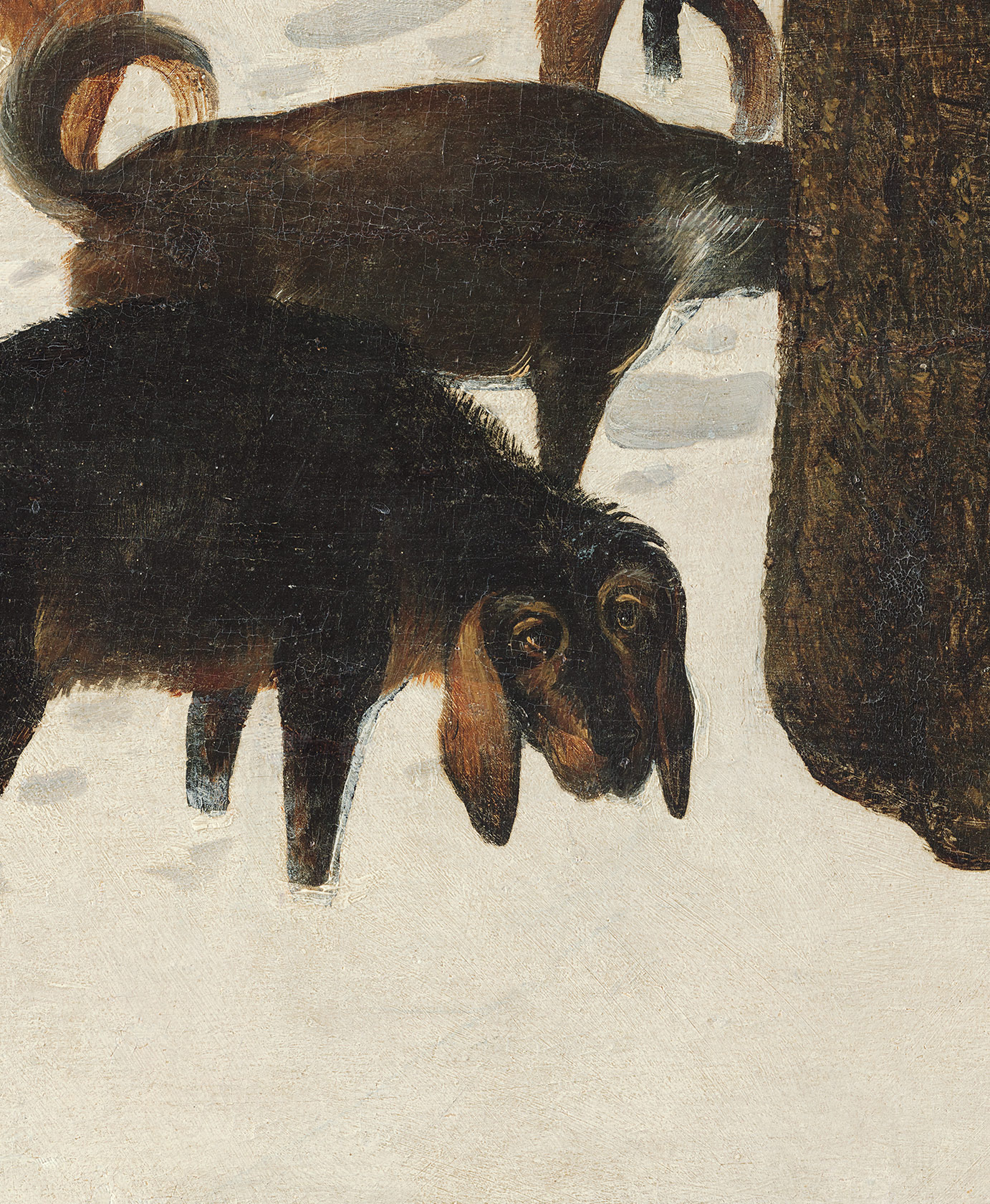The Hunters in the Snow
In many ways, Pieter Bruegel the Elder set new standards. His most famous painting The Hunters in the Snow is a brilliant case in point. Originally part of a six-part series of the Seasons, it depicts winter.
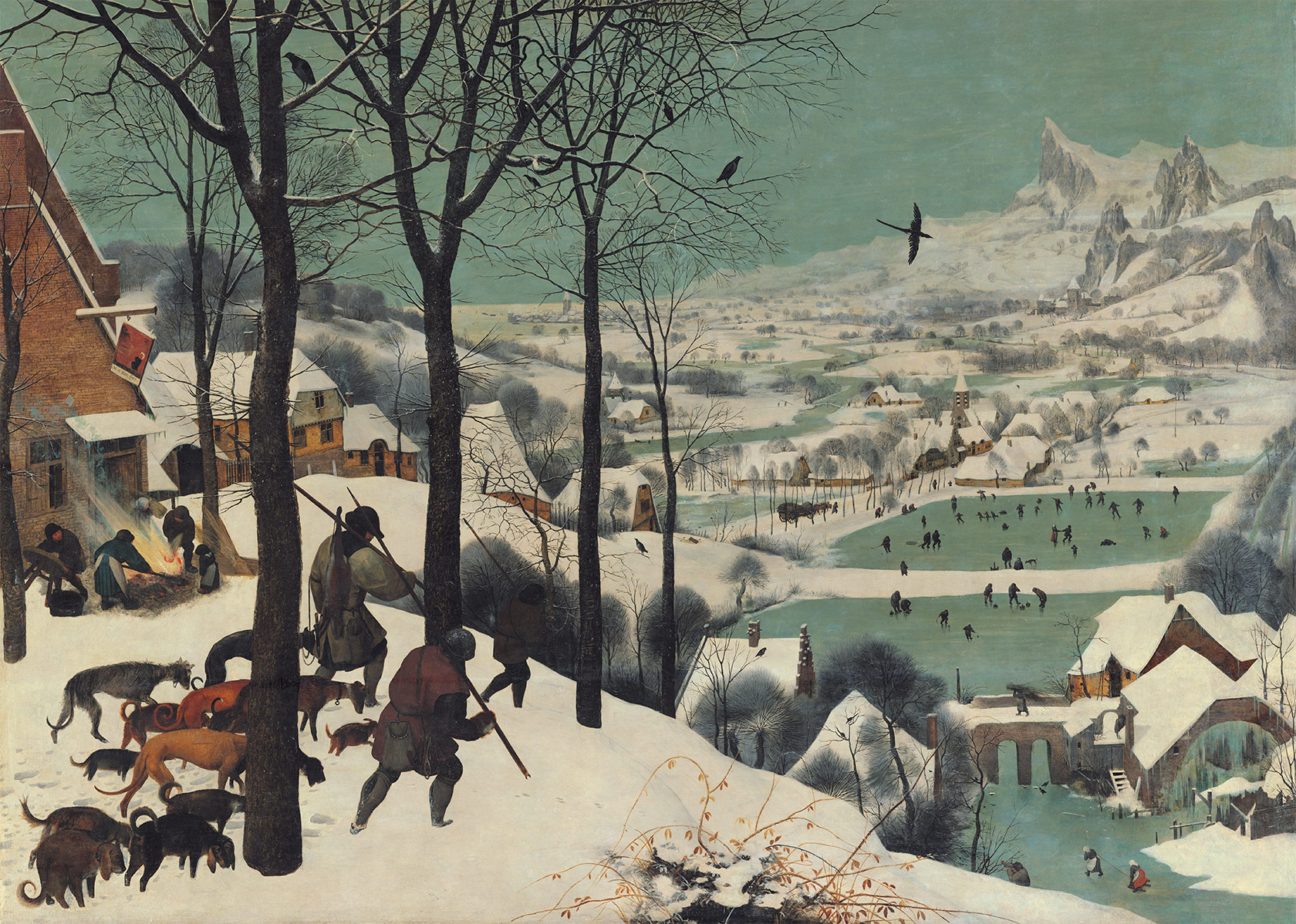
It is almost impossible to identify and describe all the details
Bruegel constructs the world from tiny pieces. As in real life, he depicts, with great fidelity, a multitude of details that occur simultaneously. It is impossible to identify all the figures and scenes with the naked eye. Today, we can make use of modern digital technology such as HD photography.
One example is the tiny figure of a man aiming his gun at some birds.
In good light (and with good eyesight) observant museum visitors can even see the fire bursting from the muzzle of his gun.
Pieter Bruegel the Elder
The Hunters in the Snow
1565 // signed and dated bottom centre BRVEGEL M D […] // Oak panel, 116.3 × 162.5 cm // Vienna, Kunsthistorisches Museum, Picture Gallery, inv. no. 1838
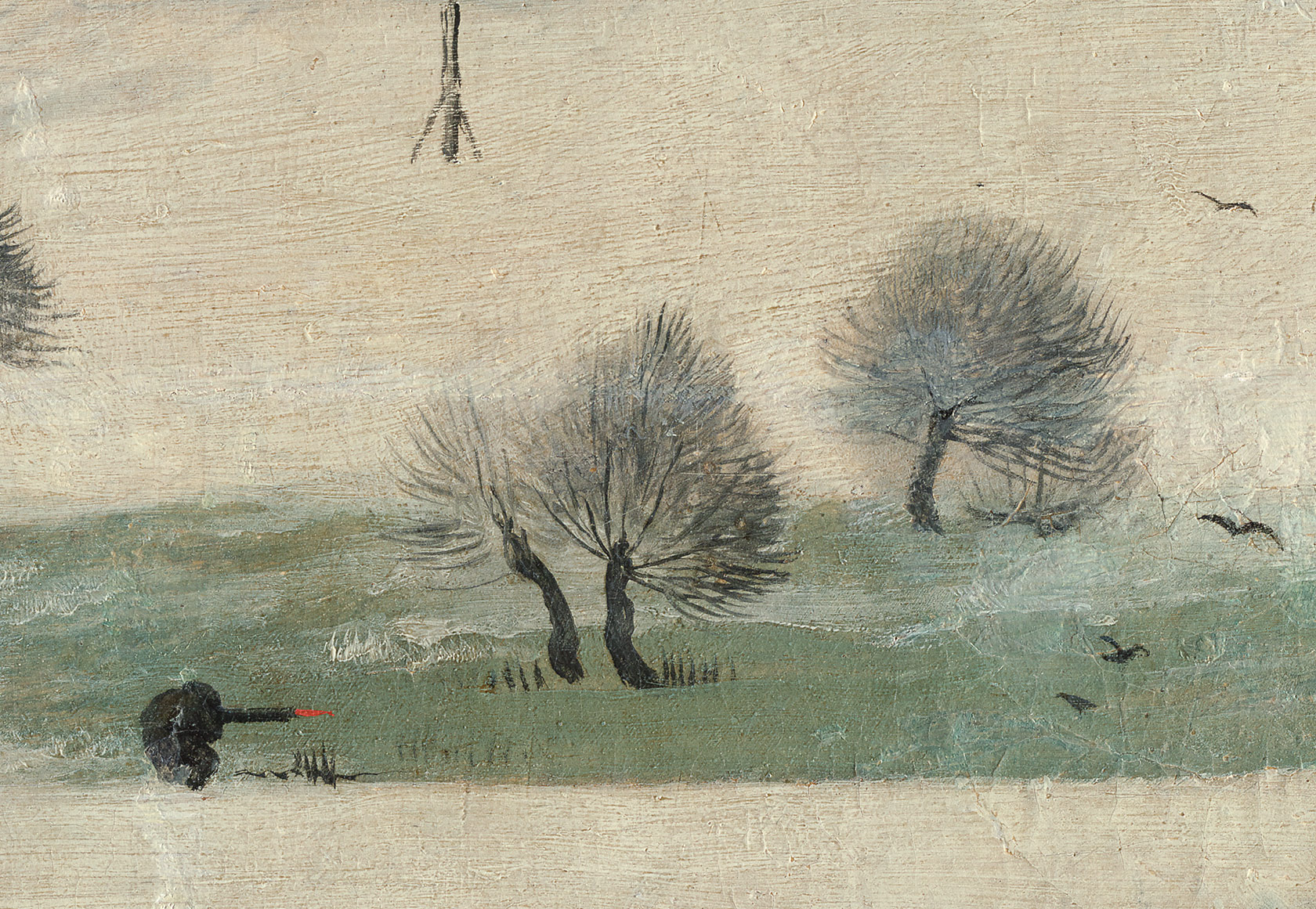
Why did Bruegel go to all this trouble depicting details almost impossible to discern?
The guests of the Antwerp merchant and collector Nicolaes Jongelinck, who will have seen the Seasons in his presumably dimly-lit dining room, had little or no chance of identifying these minute details.
Was Bruegel trying to create the world from scratch by assembling it from countless details?
Whatever may have been his intention, Bruegel must have been aware that not everyone would be able to spot the details. However, even for those who can spare only a few moments Bruegel captured the distinctive mood of each season – in this case of winter.
It is the tiny details that combine to immediately create a fascinating whole.
Even today, 450 years after Bruegel’s death, we continue to rediscover his world, and marvel at this rich profusion of details.
A landscape captures a cosmic moment
Bruegel also made a significant contribution to landscape painting with his art. His landscapes are highly realistic and capture a transitory mood in a manner reminiscent of Patinir (c. 1485 Dinant(?) – 1524 Antwerp) but not found in the work of Bruegel’s contemporaries.
In all the paintings comprising the series of the Seasons, Bruegel leads us into the composition in the same way: from an elevated viewpoint, our gaze is directed onto the wide-open landscape spread out below.
Akin to a director with a unique feeling for colour, rhythm and capturing the moment, Bruegel transposed the seasonal cadence predetermined by nature into his pictorial cycle.
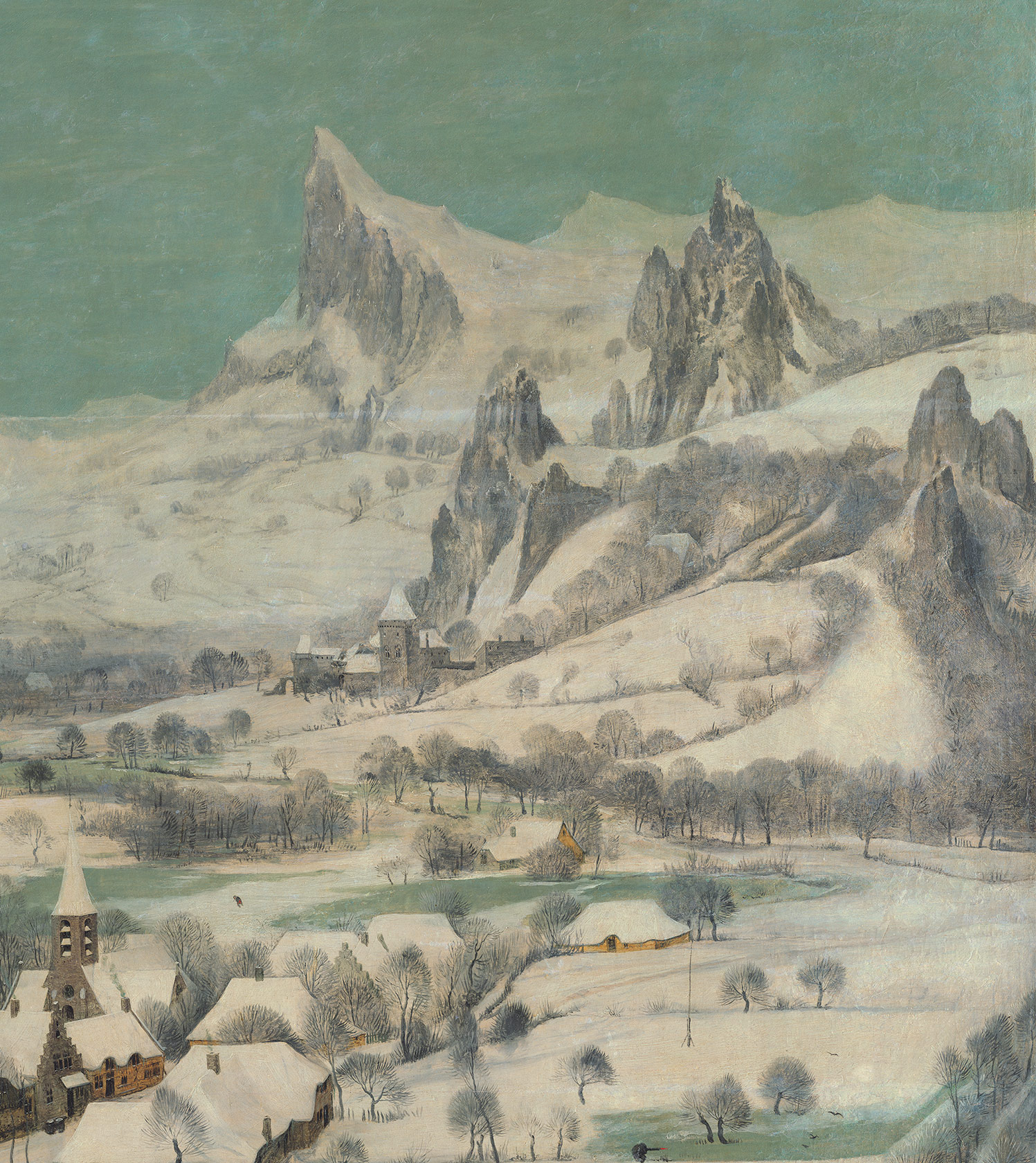
’The people in Bruegel’s paintings seem to form a community with nature rather than ruling over it by divine fiat. This is truly remarkable for the sixteenth century.’
Carsten Höller on The Hunters in the Snow
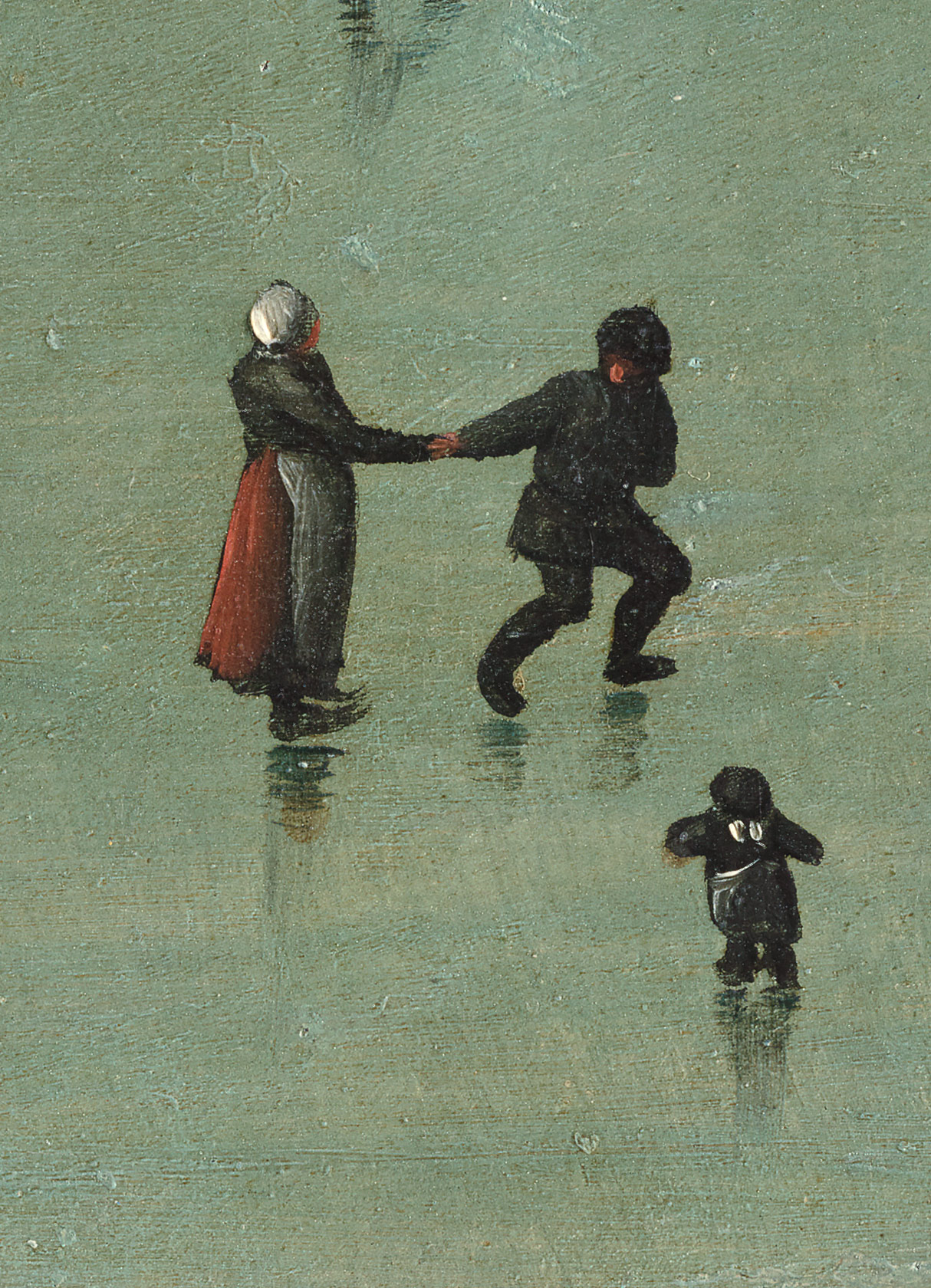
Pieter Bruegel the Elder created milestones. He inspired both his contemporaries and later artists. Artists continue to admire his works to this day.
One of these artists is the sculptor Carsten Höller, who recently wrote about Bruegel’s Hunters in the Snow in the German art magazine Monopol. He concluded his reflections with these words:
’I don’t even consider Bruegel a landscape painter. Because there are so many allusions and allegories, he was more of a poet. The artist transcends the mere expressive power of the depicted and allows the viewer to mentally grasp the whole by way of a number of minor aspects. The people in Bruegel’s paintings seem to form a community with nature rather than ruling over it by divine fiat. This is truly remarkable for the sixteenth century.’
Social Commentary
In his art, Bruegel has also left us his view of the society in which he lived. He courageously visualized various facets of both the life of his contemporaries and of modern society: many of the central themes in his work remain highly relevant today.
Bruegel is frequently titulated Peasant Bruegel, because peasants play a prominent role in his oeuvre.
Note the conflation of peasants and their activities in the cycle of the Seasons, especially in Haymaking and Harvesters.
The works’ original target audience were Jongelinck’s friends and acquaintances. They were high-status, prosperous and learned individuals. Bruegel’s paintings offered them a view from their noble abode into the every-day world of peasants.
Some of the figures in Bruegel’s compositions gaze back at the elegant company. In a way, Bruegel opened a window onto a different world.
In sixteenth-century art, peasants are often regarded as buffoons or figures of fun but Bruegel does not seem to share this coarse approach. He often adds some humorous detail, and even includes animals in the subtle glances that connect these disparate worlds. Examples of these include the white cow in the foreground of The Return of the Herd, or one of the hounds in The Hunters in the Snow.
